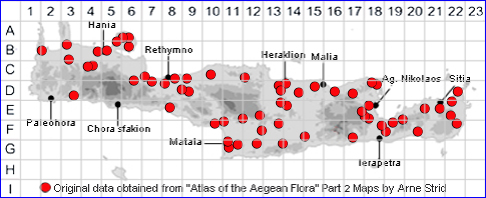
CYNOGLOSSUM CRETICUM
Family and Genus:- See- BORAGINACEAE
Common Names:- Blue houndstongue
Homotypic Synonyms:- None
Meaning:- Cynoglossum (Gr) Hound's-tongue, a name used by the Greek
physician Dioscorides' to describe the rough texture of the leaf.
Creticum (L) Cretan, from Crete.
General description:- Fairly robust medium to tall, softly hairy biennial. stems
angular, erect, branched above.
Stems:-
1) (20-)30-60 cm, hirsute or tomentose.
Leaves:-
1) Cauline, oblong to lanceolate, subsessile to semi-amplexicaul, densely
tomentose on both surfaces
Flowers:-
1) Cymes, branched flat-topped or convex ebracteate flower clusters, elongating in
fruit.
2) Calyx-lobes, 6-8 mm, oblong, hirsute.
3) Corolla, 7-9 mm, purplish in bud, but opening blue, with conspicuous deeper
inky-blue or purple reticulate venation.
a) tube, broadly funnel-shaped.
4) Stamens, inserted in the upper part of the tube.
Fruit:-
1) Nutlets, 5-7 mm diam, ovoid, without a distinct border; external face convex,
glochidiate,
Key features:-
1) Leaves, densely hairy to tomentose on both surfaces.
2) Corolla 7-9 mm, with reticulate venation.
Habitat:- Seasonally damp spots in dry open shrubby vegetation, olive groves, road
embankments and ruderal habitats, generally 0-700 m.
Distribution:- Throughout Greece. - Mediterranean region and SW Asia, through
Anatolia to Iran, Pamir and Tien Shan. Widespread and common on Crete.
.
Flowering time:- Feb-June.
Photos by:- Steve Lenton
SPECIES DESCRIPTION
